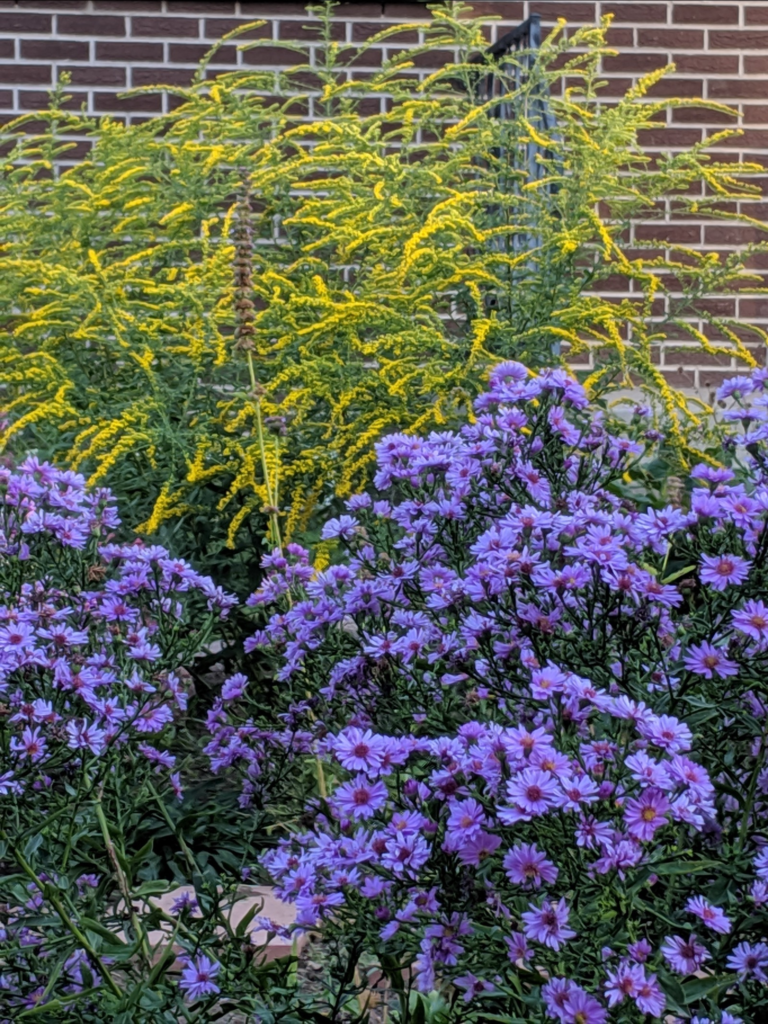By Deb Lebow Aal

If you are reading this, you have some familiarity with, and/or, some interest in, native plants and native insects. You probably have planted some native plants in your landscape, or are intending to do so. This article is to remind you that not all native plants are created equal. Some native plants provide the ecosystem with more benefits than others. The measure I am using for ecosystem benefits is how many species of caterpillars a native plant hosts. A review of why we are using this metric: Doug Tallamy, entomologist at University of Delaware, and native plant promoter extraordinaire, has researched and publicized this issue. The oversimplified explanation is baby birds need an extraordinary number of caterpillars to fledge. Fewer caterpillars equals fewer birds. Native plants support caterpillars in much greater numbers than non-native species.
The best system we know of to find the number of caterpillar species per plant, is the National Wildlife Federation’s (NWF) Native Plant Finder. This fantastic site lets you put in your zip code and find which plants get you the biggest bang, or largest caterpillar species number, per plant. I will show you what came up for my zip code, in Denver, and I will contrast that with a Boulder zip. You will see that there is a difference between native plants in areas that are not too geographically distant.

Now this doesn’t mean you shouldn’t put in your favorite native plant, if it supports only 3 caterpillar species. Most likely it supports native insects, and is beneficial. You might want to balance that Prairie Clover (Dalea purpurea), e.g., with a Chokecherry (Prunus virginiana), e.g. I am an advocate for having your favorite plant in your yard. With the amount of work we gardeners do, your yard should put a smile on your face every time you walk out there. And, again, if it’s a native plant, it is benefitting the ecosystem. The more native plants, the better!
A word of caution. For my area in Denver, the best native plant I could plant for the highest number of caterpillar species, according to the NWF database, is a willow (Salix). Willows require a lot of water, so I will not be planting a willow in my water-thrifty yard, despite the fact that it can host an astounding 322 species of caterpillars. Willows typically belong in riparian areas, near streams. My point being, there are lots of things to take into account before planting any of these plants. It’s a good idea to do some research with the list you get for your zip code before going out and purchasing plants.
Here is the list of native plants that host more than 50 species of caterpillar in my zip code, 80209:
Willow (Salix) 322
Aspen, Cottonwood, or poplar (Populus) 262
Beach Plum, Cherry and chokecherry (Prunus) 261
Maple, boxelder (Acer) 140
Rose, Sweetbriar (Rosa) 91
Goldenrod (Solidago) 79
Sunflower (Helianthus) 69
Dogwood, bunchberry (Cornus) 58
For Boulder, which you wouldn’t think would be that different, I used the zip code 80310, and here’s the list:
Oak (Quercus) 221
Birch (Betula) 216
Pine (Pinus) 202
Alder (Alnus) 193
Crabapple, apple (Malus) 162
Cranberry, blueberry (Vaccunum) 142
Blackberry, dewberry (Rubus) 102
Spruce (Picea) 95
Elm (Ulmos) 89
Fir (Abies) 86
Douglas Fir (Pseudotsuga) 83
Ash (Fraxinus) 81
Serviceberry (Amelanchier) 81
Hawthorne (Crataegus) 78
There are probably many reasons why the Boulder list is longer than the Denver list. I believe there is still ongoing research on plant/caterpillar associations, and the list may not be complete for Denver. It is important to know your local ecosystem, and to look specifically for your zip code to see which plants you might want to put in.
The biggest takeaway here is planting just a few chokecherries and native rose bushes in my yard will most likely support more caterpillars (which will help both birds and butterflies, and much more) than planting many Prairie clover plants (which host 3 caterpillar species). I will plant both, with the knowledge that my Chokecherries, which I might not “like” as much as other plants in my yard, are very important for the local ecosystem. Actually, now that I know, I Iove them!
This article was originally published September 1, 2020 with updates in October of 2023.
Curious to learn more about transforming your garden into a habitat with Colorado native wildflowers, grasses, shrubs, and trees? Check out our native gardening toolkit, register for an upcoming event, subscribe to our newsletter, and/or become a member – if you’re not one already!
